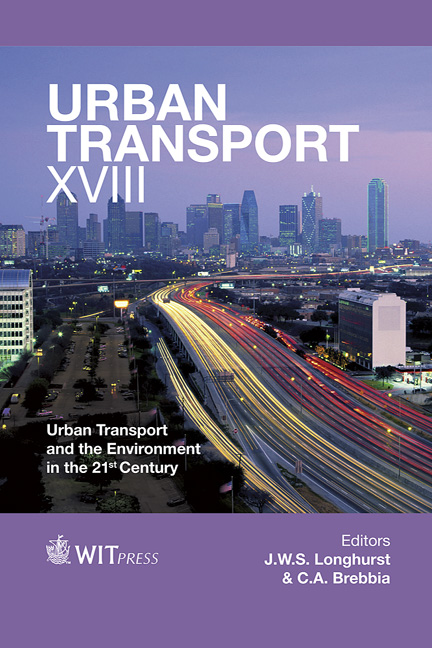Simulation Of Impacts Of Yards On Flow Conditions Using A Mesoscopic Traffic Assignment Approach
Price
Free (open access)
Transaction
Volume
128
Pages
14
Page Range
321 - 334
Published
2012
Size
2,547 kb
Paper DOI
10.2495/UT120281
Copyright
WIT Press
Author(s)
M. Di Gangi, A. Croce & V. Velardi
Abstract
This paper describes the activities carried out to check, in terms of transport analysis, impacts generated by the construction of the third lane on the A4 motorway, in the stretch between the gates of S. Donà di Piave ed Alvisopoli, in Italy. The purpose of this study is to choose the optimum configuration of yards, in terms of length and location, which reduces the effects of outflow. In particular, the application of a mesoscopic method for the simulation of outflow is dictated by the need to simulate a network broad enough to properly evaluate the influences between the disruption of the flow introduced by the yards that generate phenomena of queuing. The mesoscopic method allows us to analyze broad contexts congested with good reliability, but without the computational costs and efforts required for the calibration of microscopic models, suited to represent small networks. Keywords: traffic impacts, mesoscopic, traffic assignment. 1 Introduction Many studies (such as [1–3]) have highlighted the limits of static assignment models in analyzing phenomena connected to temporal variations in terms of both demand and supply, such as rising and scattering of queues due to temporary peaks of demand and/or capacity reductions of infrastructures. Thus, in order to comply with these phenomena, it is necessary to remove the intraperiod stationarity hypothesis and choose within-day dynamic assignment models (Dynamic Traffic Assignment – DTA).
Keywords
traffic impacts, mesoscopic, traffic assignment.





